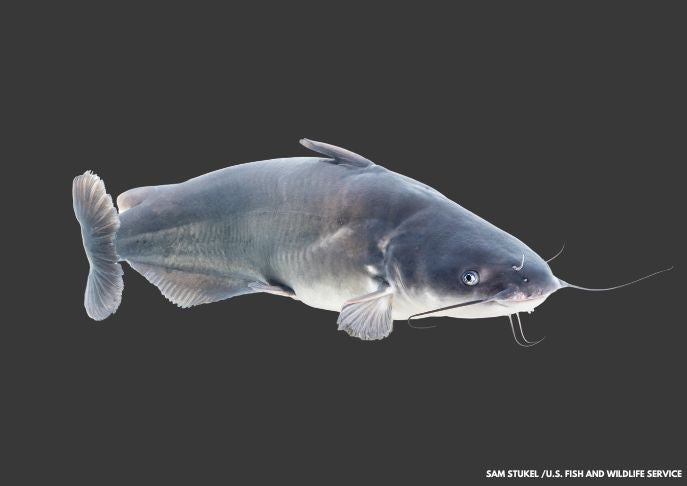The Chesapeake Bay's ecosystem faces a growing threat from an unexpected source: the blue catfish. Inadvertently introduced decades ago, these invasive fish have become a major problem for the bay's delicate balance.
Maryland state officials, however, have found a silver lining. The blue catfish, while destructive to the ecosystem, is both delicious and nutritious. This discovery has led to a unique solution: eat the invaders.
Maryland has launched a campaign promoting blue catfish as a meal option, hoping to create enough demand that the fishing industry will increase their efforts to remove these fish from the bay.
Chris Jones from the Maryland Department of Natural Resources explained the severity of the situation: "They are estimating that blue catfish are eating about 400 metric tons of blue crabs in a year, which is about 4% of the harvest of the state of Virginia."
The impact is even more significant considering that the catfish primarily consume juvenile crabs, potentially affecting future crab populations.
Blue catfish, as apex predators, consume nearly every type of fish they encounter. Their voracious appetite threatens the blue crab population, a cornerstone of Maryland's economy and a beloved local delicacy.
This strategy of consuming invasive species to control their populations is gaining traction. Campaigns with slogans like "If you can't beat 'em, eat 'em" are becoming more common as communities seek innovative solutions to ecological challenges.
The blue catfish isn't the only invader causing concern. Earlier this summer, dam technicians prevented 3,000 invasive fish, mainly northern snakeheads, from entering the bay. These fish were also consumed, turning a potential ecological disaster into a unique culinary opportunity.
As the Chesapeake Bay continues to face environmental pressures, officials hope that this appetizing approach to conservation will help restore balance to one of America's most important estuaries.
For anglers interested in joining this tasty conservation effort, it's important to know where to fish and understand local fishing seasons. Additionally, learning about effective bait choices can increase your chances of catching these invasive catfish.
MOST READ NEWS:
Five-Year-Old Angler Lands Potential New York State Fishing Record
Five-year-old Gregory Martin may have set a new New York state fishing record with a 1-pound-15-ounce pumpkinseed fish caught on Oneida Lake.
Officials Urge Consumption of Invasive Blue Catfish to Protect Chesapeake Bay
Maryland officials promote eating invasive blue catfish to protect Chesapeake Bay's ecosystem. Learn how this tasty solution aims to restore balance and support local fisheries.
Yellowstone Reopens Madison and Gibbon Rivers for Fishing, Firehole River Partially Open
Yellowstone reopens Madison and Gibbon rivers for fishing, with Firehole River under hoot-owl restrictions. Stay updated on park fishing conditions.
Maryland Angler Reels in Record-Breaking Blueline Tilefish
Maryland angler London J. Anthony sets new state record with 20.6-pound blueline tilefish caught off Ocean City, breaking previous 12-year-old record.
Fishing Buddies Break West Virginia Black Crappie Records Within Hours
Two West Virginia anglers break state records for black crappie within hours at Woodrum Lake, showcasing the state's exceptional fishing opportunities.
California Free Fishing Day: Cast Your Line on August 31
California Free Fishing Day on August 31 offers anglers a chance to fish without a license. Enjoy the state's waters and maybe catch your next big fish!
PFAS in Seafood: New Study Alerts Gulf of Maine Anglers and Consumers
New study reveals PFAS in seafood from the Gulf of Maine, raising health concerns. Learn about the risks, affected species, and tips for safe consumption of local seafood.
Don't Get Caught Without One: Texas Fishing License Renewal Deadline Approaching Fast
Texas fishing license renewal deadline looms. Learn about digital options, exemptions, and why you need to act now to keep enjoying Texas waters.
New York Adds August 31 to Free Fishing Days
New York State has expanded its Free Fishing Days program, adding August 31 to the list of dates when anglers can cast their lines without a license. This move aims to encourage more people to experience the joys of fishing in the state's diverse waterways.


